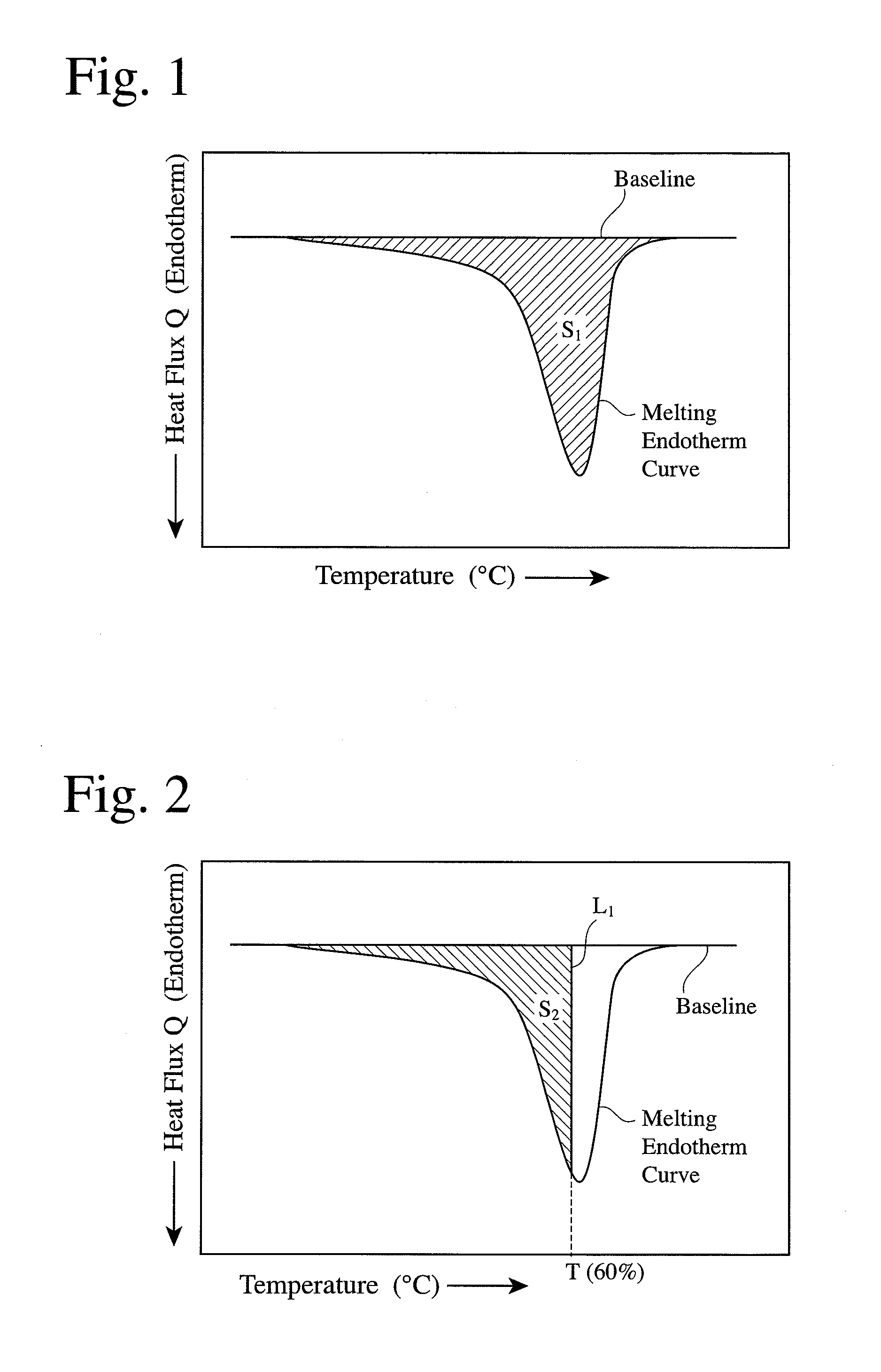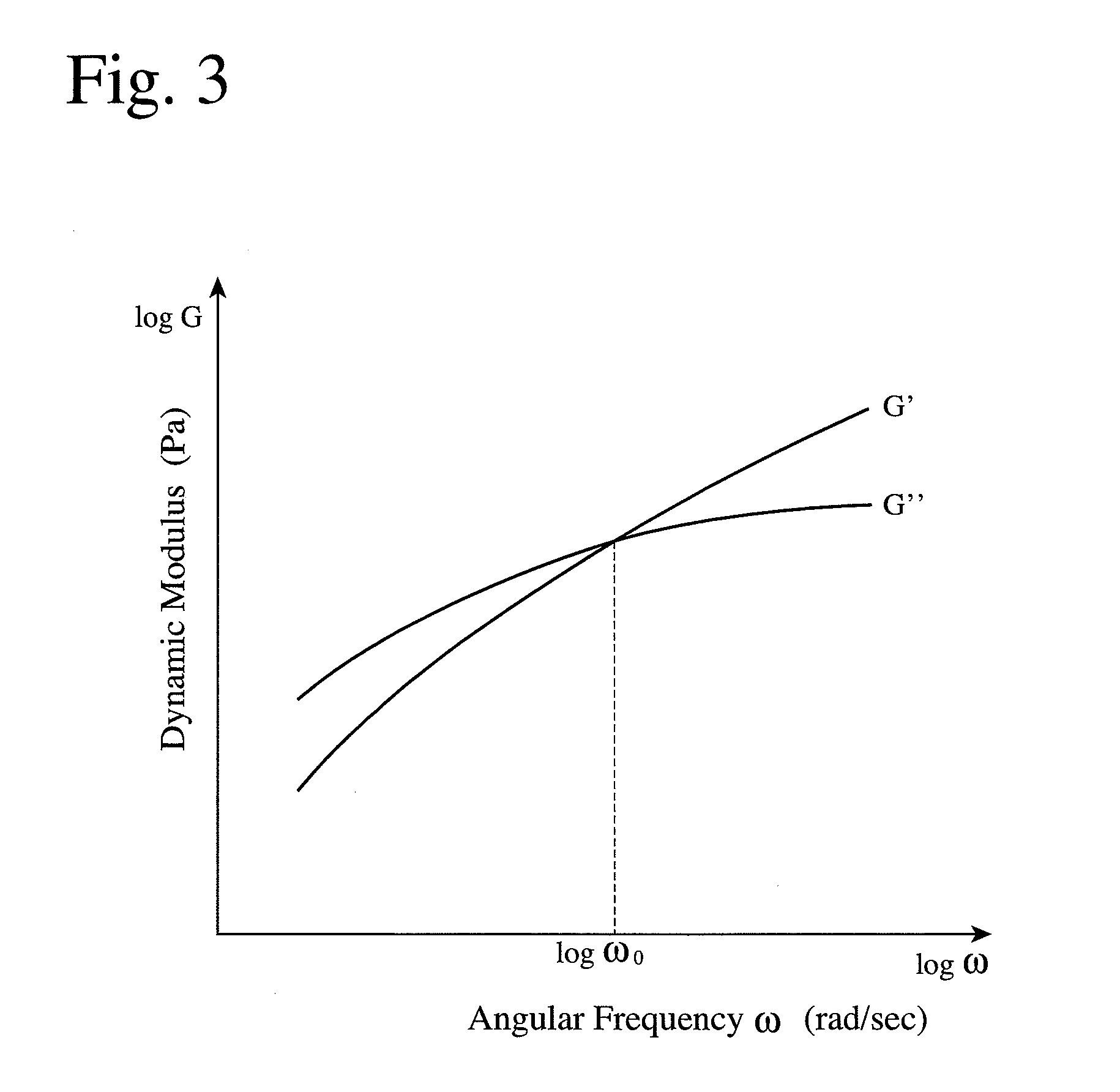Microporous polyolefin membrane, its production method, battery separator and battery
a technology of microporous polyolefin and production method, which is applied in the direction of membranes, secondary cell details, sustainable manufacturing/processing, etc., can solve the problems of accelerating runaway reaction, shrinkage of separators, and insufficient properties of microporous membranes described in the above references to prevent short-circuiting, etc., to achieve excellent balance of shutdown properties, meltdown properties, and shrinkage resistan
- Summary
- Abstract
- Description
- Claims
- Application Information
AI Technical Summary
Benefits of technology
Problems solved by technology
Method used
Image
Examples
example 1
[0130]100 parts by mass of a polyethylene (PE) composition comprising 30% by mass of ultra-high-molecular-weight polyethylene (UHMWPE) having a mass-average molecular weight (Mw) of 2.5×106, and 70% by mass of high-density polyethylene (HDPE) having Mw of 2.8×105 was dry-blended with 0.375 parts by mass of tetrakis[methylene-3-(3,5-ditertiary-butyl-4-hydroxyphenyl)-propionate]methane. Measurement revealed that the PE composition comprising UHMWPE and HDPE had T (60%) of 134.3° C., a melting point of 135° C., and a crystal dispersion temperature of 100° C.
[0131]The Mws of UHMWPE and HDPE were measured by a gel permeation chromatography (GPC) method under the flowing conditions.[0132]Measurement apparatus: GPC-150C available from Waters Corporation,[0133]Column: Shodex UT806M available from Showa Denko K.K.,[0134]Column temperature: 135° C.,[0135]Solvent (mobile phase): o-dichlorobenzene,[0136]Solvent flow rate: 1.0 ml / minute,[0137]Sample concentration: 0.1% by weight (dissolved at 13...
example 2
[0143]A microporous polyethylene membrane was produced in the same manner as in Example 1, except that a polyethylene solution having ω0 of 12 rad / sec and η*(0.01) of 18,000 Pa·s was prepared such that a ratio of the total charging speed Q of the polyethylene composition and the liquid paraffin to a screw rotation speed Ns was 0.15.
example 3
[0144]A microporous polyethylene membrane was produced in the same manner as in Example 1, except that a polyethylene solution having ω0 of 8.5 rad / sec and η*(0.01) of 32,000 Pa·s was prepared such that a ratio of the total charging speed Q of the polyethylene composition and the liquid paraffin to a screw rotation speed Ns was 0.45.
PUM
| Property | Measurement | Unit |
|---|---|---|
| shutdown temperature | aaaaa | aaaaa |
| shutdown temperature | aaaaa | aaaaa |
| melting shrinkage ratio | aaaaa | aaaaa |
Abstract
Description
Claims
Application Information
 Login to View More
Login to View More - R&D
- Intellectual Property
- Life Sciences
- Materials
- Tech Scout
- Unparalleled Data Quality
- Higher Quality Content
- 60% Fewer Hallucinations
Browse by: Latest US Patents, China's latest patents, Technical Efficacy Thesaurus, Application Domain, Technology Topic, Popular Technical Reports.
© 2025 PatSnap. All rights reserved.Legal|Privacy policy|Modern Slavery Act Transparency Statement|Sitemap|About US| Contact US: help@patsnap.com



